INDIAN ARMED FORCES CHIEFS ON
OUR RELENTLESS AND FOCUSED PUBLISHING EFFORTS

SP Guide Publications puts forth a well compiled articulation of issues, pursuits and accomplishments of the Indian Army, over the years

I am confident that SP Guide Publications would continue to inform, inspire and influence.

My compliments to SP Guide Publications for informative and credible reportage on contemporary aerospace issues over the past six decades.
Progress in the Defence Sector in the Past One year
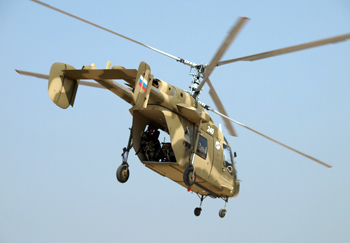
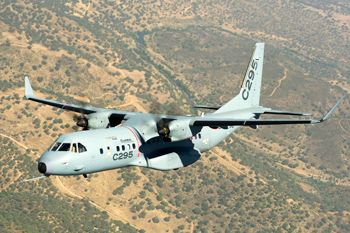
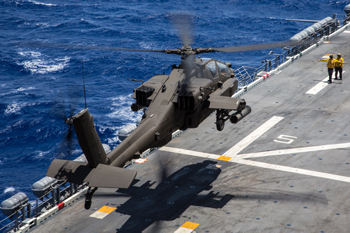
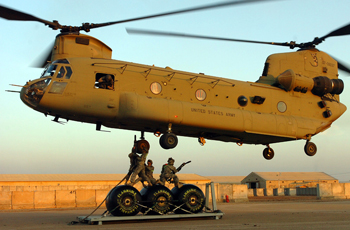
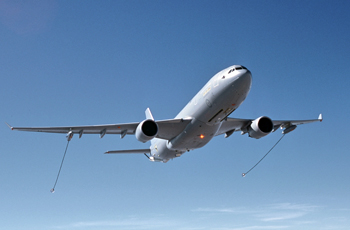
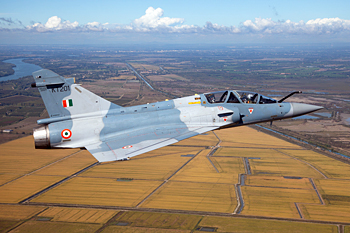
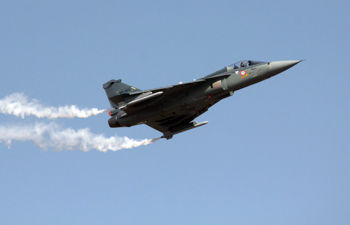
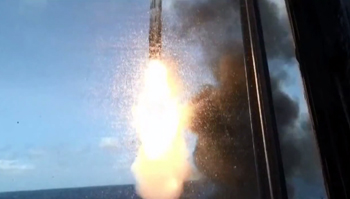
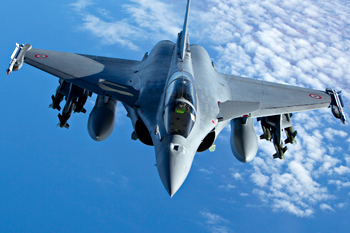
Backdrop
The present NDA government was sworn in on 26 May 2014. Thus one year later there is an intense debate in the country about the progress made by this government on all fronts and the results are mixed. There are many reasons for this phenomenon, the main reason being that the election rhetoric had raised expectations of the people beyond the realm of reality. Moreover one year is admittedly too short a time to judge any governments performance. Hence we are looking at the decisions taken so far along with the trends in the government’s policy pronouncements and actions which are a strong indication of the likely ground situation in the future. This short article gives a bird’s eye view of the happenings in the defence sector.
To appreciate the actions of the government in the past one year in the defence sector we have to go back to check the reality that existed in May 2014 as far as the operational capability of the armed forces is concerned and then assess the policy changes/action taken. Let us start with the army’s operational readiness profile.
It was reported in the media that the former COAS, General V.K. Singh (Retired), had written to the Prime Minister on 12 March 2012 regarding the glaring deficiencies in the army. When the Generals age related controversy was raging this letter was deliberately leaked to the media. However the positive effect was that it revealed the apathy in the then UPA government and the Ministry of Defence led by an indecisive Defence Minister. It highlighted that the mission reliability of mechanised vehicles was poor, the artillery was obsolete and inadequate, air defence was antiquated, armour was unreliable due to regular barrel accidents caused by mismatch between indigenous barrels and ammunition, night-fighting devices were insufficient, aviation corps helicopters needed urgent replacements, and holdings of all types of missiles, anti-tank and specialized ammunition was critically low. As if this was not enough, we may now add the lack of suitable assault rifles and carbines for the infantry and bullet proof jackets. The overall list is too long to be counted here but suffice it to say that former Defence Minister Antony’s ‘lost decade’ has left gaping holes in India’s defence preparedness.
Similarly the IAF is down to 34 squadrons against 42 authorised. This would dip to 30 squadrons by the end of this decade, as nine squadrons of MiG-21 and MiG-27s retire. Under the circumstances, the IAF is extending the life of many of its older generation fighters.
The state of the Indian navy is equally dismal as far as their submarine fleet is concerned. With Pakistan acquiring modern submarines, and Chinese submarine strength increasing in overwhelming numbers, expanding India’s submarine fleet became an obvious national priority.
While much discussion ensued, as it usually happens in India, the UPA government did not fully wake up from its slumber. The way we treat our operational preparedness can be seen by the recent CAG report of 2015 on Ammunition Management covering the period 2008-09 to 2012- 13 which was tabled in the Parliament on 06 May 2015. It reiterated what the former COAS had stated as far as the ammunition is concerned. It said that Army units needed to maintain a War Wastage Reserve (WWR) of 40 days for all types of ammunition, but were presently managing with just the 'Bottom Line' or 'Minimum Acceptable Risk Level' (MARL) requirements which averaged to 20 days.
In light of the above inheritance what actions has the Modi government taken to ameliorate the equipment situation in the armed forces? These are given in the succeeding paragraphs.
Re-energising the Ministry of Defence
Prioritisation
Prioritisation of projects was the first step. The Defence Minister found that the bureaucracy in the ministry — both civil and military — was sitting on some 400-odd big and small projects that were critical to the three armed forces. A thorough review revealed that nearly one-third of the 400-odd projects were now irrelevant. So they were discarded. About 50 projects were accelerated since they were of critical importance.
The Minister with his close aids identified critical schemes across the three services that needed immediate funding and implementation. These were put on fast track. The purchase of 50,000 bullet proof jackets, for instance, was sanctioned on a fast track basis similarly supply of Extreme High Altitude Clothing (for soldiers posted in Siachen and similar terrain) stuck for more than two years was also sanctioned. The Minister personally intervened and resolved the issue.
Committee for Revising the Defence Procurement Procedure
A 10-member Committee of Experts to suggest amendments to the existing DPP and formulate a new policy framework for defence acquisition has been instituted.
The terms of reference for the committee are interesting: It is mandated to a) evolve a policy framework to facilitate ‘Make in India’ in Defence Manufacturing and align the policy evolved with the DPP 2013 and b) to suggest requisite amendments to DPP 2013 to remove the bottlenecks in the procurement process and also simplify/rationalise various aspects of defence procurements. The Committee, made up of eight non-government and retired government officials and two serving bureaucrats from the Defence Ministry, has been asked to submit its recommendations within 45 days.
Chief of Defence Staff
As regards the possibility of appointing a Chief of Defence Staff (CDS), an issue that has often kept the three forces divided. The Defence Minister in an interview to Karan Thapar on 26 May 2015 said that he was currently reading the Goldwater-Nichols Act (of the United States) that pushed through sweeping reforms in the American military almost 30 years ago. He said that he is also consulting various experts and people and by about July this year he would have a paper ready for presentation to the Cabinet.
Sanctions in respect of the Army’s requirements
Light Weight Howitzers
The Army had for long been demanding 155mm/39- calibre light-weight howitzers, which can be airlifted, with a strike range of over 30-km range for the mountains. This government to government deal with the BAE Systems of the US, which had been stuck, has finally been cleared by the MoD. How long it takes get them on the ground remains to be seen.
Light Helicopters
On 13 May 2015 the Defence Acquisition Council (DAC) also cleared acquisition of 200 Kamov Light Utility Helicopters (3,000 crore).
Mountain Strike Corps
The Mountain Strike Corps sanctioned by the UPA II for the Eastern Theatre will be sized to about 30,000 strong. It seems that the plan now is to raise a smaller rapid reaction force to be deployed on the Chinese border. The idea is to create an interventionist force that can operate in the mountains. In the second phase, the Army will likely add air assault capability and special forces if the above plan is approved. The current downsizing of the mountain strike corps is because the previous government had not thought through the costs involved in raising and equipping such a corps. Additionally it comes at a time when existing Army units are short of everything from field guns to ammunition.
Border Roads
Defence Ministry has approved fast-track road building along the disputed border with China.
Sanctions in respect of the IAF Requirements
Replacements for AVRO
11,929 crore(about $1.9billion) Avro replacement deal was sanctioned by the Defence Acquisition Council in May 2015. This deal would be through the Tata-Airbus consortium for delivering replacements for 56 Avros to the Indian Air Force.
Apache Attack helicopters & Chinook heavy lift helicopters
India is to acquire 22 Boeing AH-64E Apache attack helicopters and 15 CH-47F Chinook heavy lift helicopters for the IAF, valued at $2.5 billion. As per media reports, the file is with Ministry of Finance.
Mid-air Refueller Aircraft
Defence Minister informed the Rajya Sabha in a written reply on Wednesday, 13 May 2015, that the plan to acquire mid-air refueller aircraft for the Indian Air Force from Airbus is still on track.
Life Extension of Fighter Aircraft
IAF is extending the life of two Mirage 2000 squadrons, three MiG-29 squadrons and six Jaguar squadrons for 15-20 years. In March 2015, French vendor, Thales, handed over the first two upgraded Mirage 2000-I fighters in Paris. Over the next 7-10 years, Hindustan Aeronautics Ltd (HAL) will upgrade another 49 Mirage 2000s in Bengaluru for 12,100 crore. 69 MiG-29 fighters are being upgraded for $964 million, an exercise the government says will be completed by 2016.
Induction of Tejas in Indian Air Force
Indian Air Force (IAF) placed order for 20 Light Combat Aircraft (LCA), Tejas, in Initial Operational Clearance (IOC) configuration and 20 more Aircraft in Final Operational Clearance (FOC) configuration. LCA, Tejas, has already achieved IOC in December 2013 and FOC is likely to be achieved by end of 2015. The first of the IOC standard aircraft has been built and successfully completed its maiden flight on 30th September 2014. This aircraft will be handed over to IAF by March 2015 after some upgrades. The second aircraft will also be ready by March 2015 for maiden flight. The first 20 aircraft will be built by 2017-18.
Sanctions in respect of Indian Navy’s Requirements
Building of Indigenous Submarines
The Defence Acquisition Council (DAC) has approved of a proposal to build six conventional diesel electric submarines indigenously;The Acceptance of Necessity (AON) cost of the project is 18798 crore (2005 cost). However, the final cost arises through the bidding / negotiation process. The Defence Acquisition Council (DAC) has approved constitution of a ‘Core Committee’ to identify suitable Indian shipyards to bid for construction of six submarines.
Construction of seven stealth frigates and six nuclear-powered submarines approved
In a major step towards building a formidable blue-water Navy for the future, the Modi government has cleared the indigenous construction of seven stealth frigates and six nuclear-powered attack submarines. The cost is likely to be about $16 billion.
India’s Defence Acquisition Council clears Mine Sweeping Vessels
India's defence ministry has cleared a project worth 32,000 crore (about $5.2 billion) for 12 mine sweeping vessels to be made in the country during February 2015.
BrahMos for Navy
Six additional BrahMos units for Navy (2,700 crore) have been sanctioned by the Defence Acquisition Council.
Comments and Observations
The above paragraphs do not give a complete picture of the voids and deficiencies in the services. They show some of the major steps underway but they do not reflect or measure accurately the work required to undo the harm done by the previous government who remained sedentary on defence matters for more than a decade. The readers must appreciate that the size of the Indian armed forces is such that 10 years of total neglect have created voids that have had a highly deleterious effect on the capability of the armed forces to deliver victory in future conflicts. Today even if the government wishes to buy ammunition from the world market at short notice, no vendor will be able to meet our requirements in less than a few years in view of the immense quantities required. The same is the case in respect of important equipment such as fighter aircraft, submarines, light observation and surveillance helicopters for the army, other heavier weapons including air defence weapons, small arms such as assault rifles and carbines, and even personal clothing and accoutrement.
No one is impressed by the sanctions given by the Defence Acquisition Council because these sanctions reflect the start of the procurement cycle which is likely to extend upto three years or more and in fact in some cases such as the Rafale MMRCA it has taken nearly a decade already and their arrival will take another few years. In another case involving the assault rifle for the army which has been in the pipeline for the past five years it is believed that after all the trials the MoD may cancel its 2011 tender for 66,000 muti - caliber assault rifle. Similarly the December 2010 tender to procure 44,618 5.56mm close quarter (CQB) carbines and 33.6 million rounds of ammunition, remains undecided. In the last one year many files may have been cleared but the effect on the ground is unlikely to be visible in the next few years due to the reasons explained above. Acquiring military capability is not about pushing files but making a decisive difference in the fighting capability of the armed forces on the ground. NDA government so far is merely pushing files which do not impress the armed forces or the people of this country.
Our procurement procedures and the methodology of induction of new weapons and other systems are flawed and require revolutionary changes. Moreover it is high time that the nation carried out a fresh review of our defence capability in light of the changed global and regional environment and “nuclearisation” of the region to decide on the overall strength of the armed forces which are even now organized and structured to fight full scale conventional conflicts on land, sea and air. What are the challenges ahead and what must be our capabilities to engage in future threats and challenges need reconsideration and restructuring. All of it should be in light of the likely availability of defence budgets in the future which currently are not even sufficient even to make up the voids and maintain the current force levels let alone modernizing the force.





